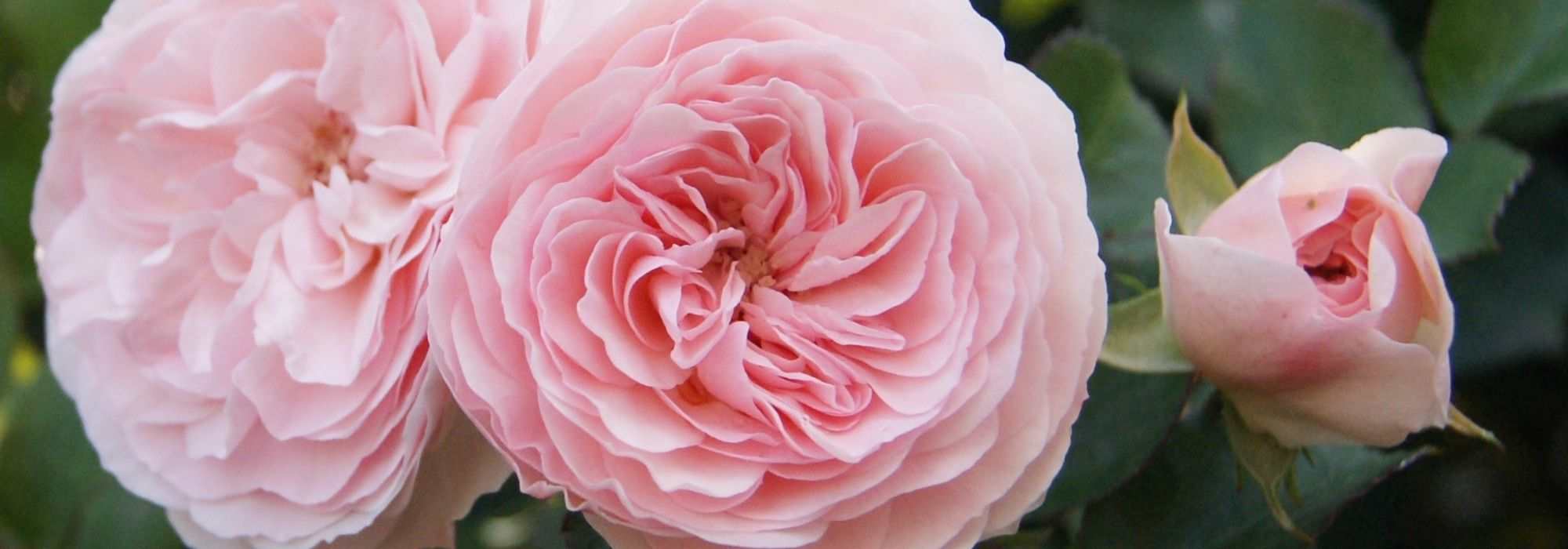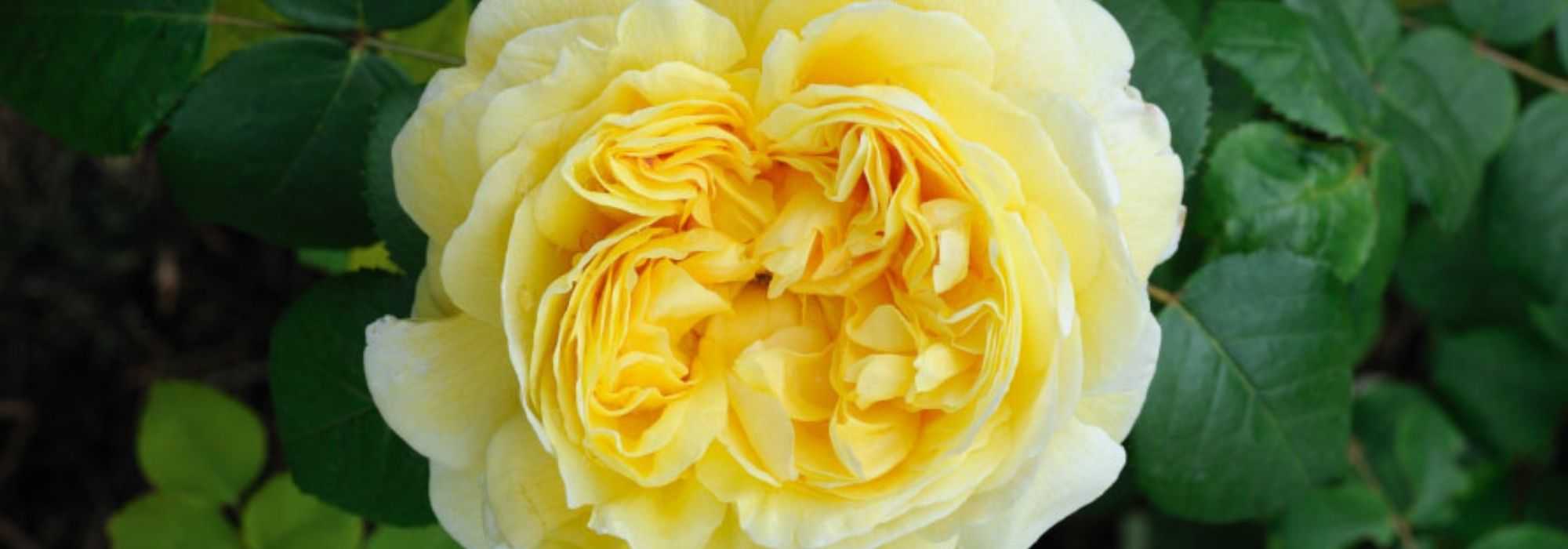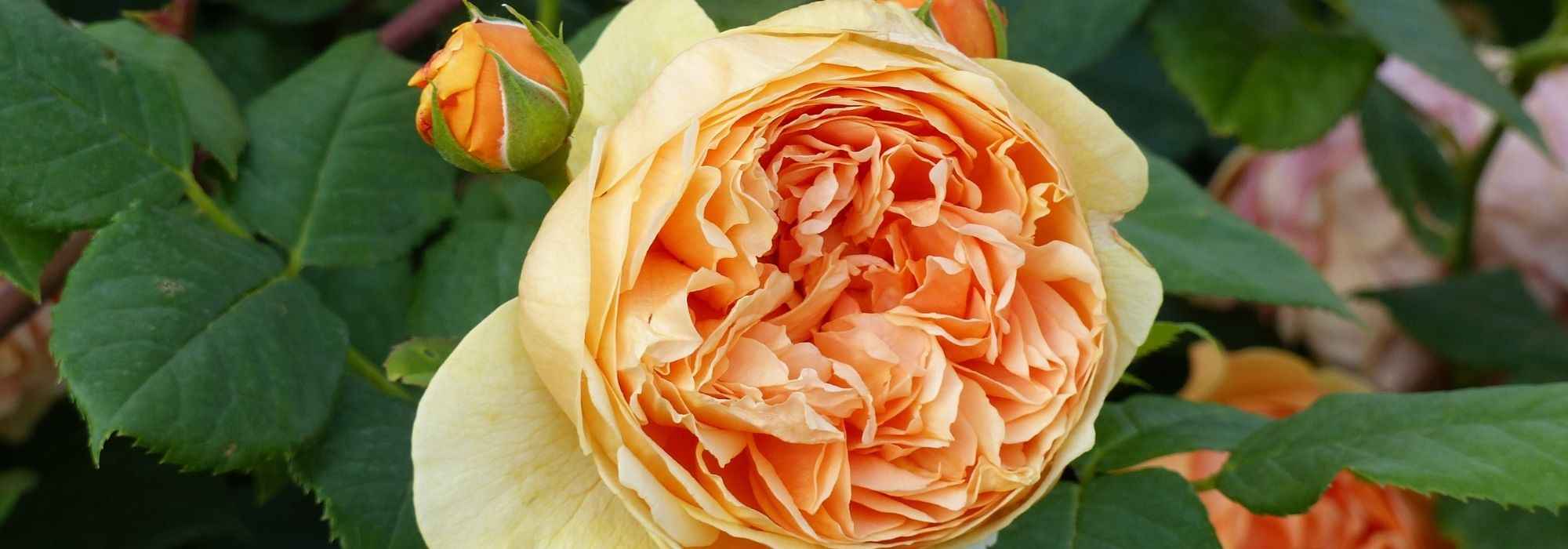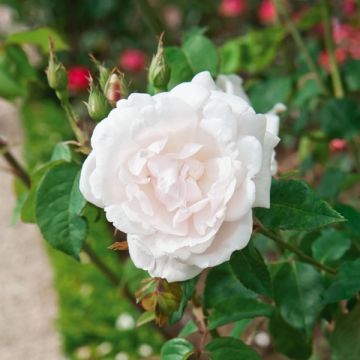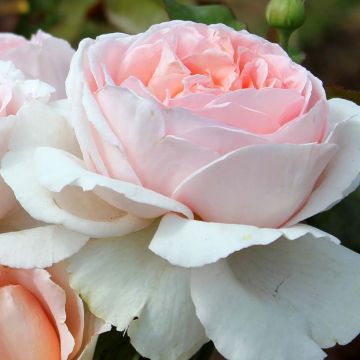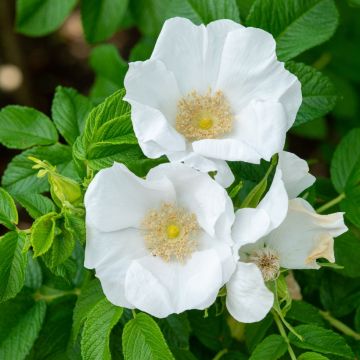

Rosa Maid Marion - English Shrub Rose


Rosa Maid Marion - English Shrub Rose
Rosa Maid Marion - English Shrub Rose
Rosa Maid Marion® 'Austobias'
Thanks to Shauna for order preparation and Djrs from the shipping department, the rosebush I received clearly spent a very long time in a pot (+ lots of dandelion roots), however, it still seems healthy to me. Planted near the 'La Rose de Molinard' variety, I am now eagerly awaiting its spring growth (or lack thereof)...
Thierry, 07/12/2021
Special offer!
Receive a €20 voucher for any order over €90 (excluding delivery costs, credit notes, and plastic-free options)!
1- Add your favorite plants to your cart.
2- Once you have reached €90, confirm your order (you can even choose the delivery date!).
3- As soon as your order is shipped, you will receive an email containing your voucher code, valid for 3 months (90 days).
Your voucher is unique and can only be used once, for any order with a minimum value of €20, excluding delivery costs.
Can be combined with other current offers, non-divisible and non-refundable.
We guarantee the quality of our plants for a full growing cycle, and will replace at our expense any plant that fails to recover under normal climatic and planting conditions.
Description
The English rose Maid Marion produces sumptuous, almost perfect, pale pink roses. The outer petals, arranged in a cup shape, enclose a multitude of smaller, perfectly arranged petals. The fragrance of the flowers is like myrrh, followed by cloves. It is a bush with a compact and well-branched habit, and it blooms repeatedly.
This bush, slightly smaller than others in the same range, has an upright but also branching and bushy habit, somewhat wild. It reaches about 1m (3ft) in all directions, with fairly rapid growth. It stands out for the perfection of its flowers, which are among the most beautiful that can exist. The buds open into rounded cups, with large outer petals enclosing numerous smaller petals inside. When fully open, the flowers form a perfect rosette shape, with outer petals forming a perfectly rounded edge. They are highly fragrant, and their fragrance is noticeable in the evening air during summer. The scent evolves from old rose notes to more fruity, spicy, and powerful accents as the flower ages. It blooms from June until frost, with a pause in August. It shows good resistance to rain and also performs well under the sun.
Perfect for small gardens, this Maid Marion rose is very effective in flower beds. As it sometimes tends to thin out at the base, about 25 cm (10in), it can associate well with perennials such as lavender, catmints, sage (Salvia pratensis), or Gauras. Just for its fragrance, it should be placed near a pathway, as it perfumes the surrounding air.
Maid Marion was the fiancée of the legendary hero Robin Hood, in Sherwood Forest.
Obtained by David Austin in 2010.
Rosa Maid Marion - English Shrub Rose in pictures


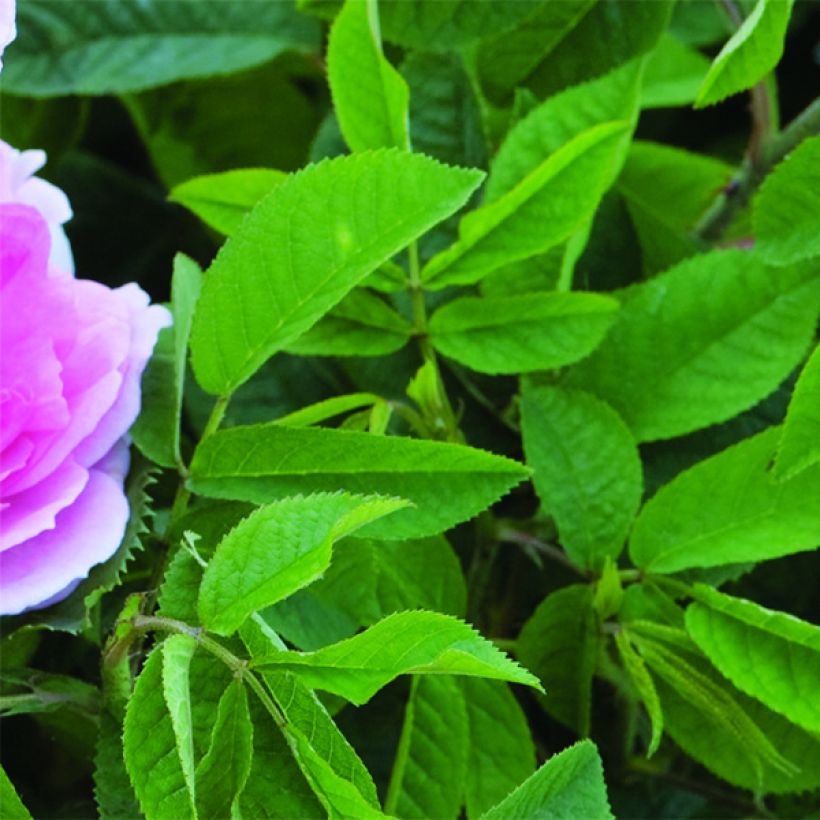

Plant habit
Flowering
Foliage
Botanical data
Rosa
Maid Marion® 'Austobias'
Rosaceae
Cultivar or hybrid
Rosa canina Laxa (Wrapped bare root, 4L/5L pot)
Planting and care
Plant the English Rose Maid Marion in a sunny or lightly shaded position. English roses are tolerant but won't appreciate excessive limestone. They will adapt to any garden as long as the soil is well worked and rich enough. To plant your rose, prepare the soil by crumbling it and adding an amendment, such as bonemeal, at the bottom of the planting hole. Water abundantly after planting to remove air pockets. Water regularly for a few weeks to encourage root growth. Pruning English roses is essential for flowering. At the end of winter, shorten the branches to 3-5 buds above the ground (at the lowest level), choosing an outward-facing bud for a more elegant habit. Take advantage of this pruning to remove dead wood and unsightly branches. Pruning is done at an angle above a bud. As the flowers bloom, remove faded flowers to stimulate the development of other buds.
Roses are often spotted or unsightly in late summer, but it is not a problem for their development. These spots are not harmful to the rose; it is a natural phenomenon.
Planting period
Intended location
Care
Planting & care advice
-
, onOrder confirmed
Reply from on Promesse de fleurs
Similar products
Haven't found what you were looking for?
Hardiness is the lowest winter temperature a plant can endure without suffering serious damage or even dying. However, hardiness is affected by location (a sheltered area, such as a patio), protection (winter cover) and soil type (hardiness is improved by well-drained soil).

Photo Sharing Terms & Conditions
In order to encourage gardeners to interact and share their experiences, Promesse de fleurs offers various media enabling content to be uploaded onto its Site - in particular via the ‘Photo sharing’ module.
The User agrees to refrain from:
- Posting any content that is illegal, prejudicial, insulting, racist, inciteful to hatred, revisionist, contrary to public decency, that infringes on privacy or on the privacy rights of third parties, in particular the publicity rights of persons and goods, intellectual property rights, or the right to privacy.
- Submitting content on behalf of a third party;
- Impersonate the identity of a third party and/or publish any personal information about a third party;
In general, the User undertakes to refrain from any unethical behaviour.
All Content (in particular text, comments, files, images, photos, videos, creative works, etc.), which may be subject to property or intellectual property rights, image or other private rights, shall remain the property of the User, subject to the limited rights granted by the terms of the licence granted by Promesse de fleurs as stated below. Users are at liberty to publish or not to publish such Content on the Site, notably via the ‘Photo Sharing’ facility, and accept that this Content shall be made public and freely accessible, notably on the Internet.
Users further acknowledge, undertake to have ,and guarantee that they hold all necessary rights and permissions to publish such material on the Site, in particular with regard to the legislation in force pertaining to any privacy, property, intellectual property, image, or contractual rights, or rights of any other nature. By publishing such Content on the Site, Users acknowledge accepting full liability as publishers of the Content within the meaning of the law, and grant Promesse de fleurs, free of charge, an inclusive, worldwide licence for the said Content for the entire duration of its publication, including all reproduction, representation, up/downloading, displaying, performing, transmission, and storage rights.
Users also grant permission for their name to be linked to the Content and accept that this link may not always be made available.
By engaging in posting material, Users consent to their Content becoming automatically accessible on the Internet, in particular on other sites and/or blogs and/or web pages of the Promesse de fleurs site, including in particular social pages and the Promesse de fleurs catalogue.
Users may secure the removal of entrusted content free of charge by issuing a simple request via our contact form.
The flowering period indicated on our website applies to countries and regions located in USDA zone 8 (France, the United Kingdom, Ireland, the Netherlands, etc.)
It will vary according to where you live:
- In zones 9 to 10 (Italy, Spain, Greece, etc.), flowering will occur about 2 to 4 weeks earlier.
- In zones 6 to 7 (Germany, Poland, Slovenia, and lower mountainous regions), flowering will be delayed by 2 to 3 weeks.
- In zone 5 (Central Europe, Scandinavia), blooming will be delayed by 3 to 5 weeks.
In temperate climates, pruning of spring-flowering shrubs (forsythia, spireas, etc.) should be done just after flowering.
Pruning of summer-flowering shrubs (Indian Lilac, Perovskia, etc.) can be done in winter or spring.
In cold regions as well as with frost-sensitive plants, avoid pruning too early when severe frosts may still occur.
The planting period indicated on our website applies to countries and regions located in USDA zone 8 (France, United Kingdom, Ireland, Netherlands).
It will vary according to where you live:
- In Mediterranean zones (Marseille, Madrid, Milan, etc.), autumn and winter are the best planting periods.
- In continental zones (Strasbourg, Munich, Vienna, etc.), delay planting by 2 to 3 weeks in spring and bring it forward by 2 to 4 weeks in autumn.
- In mountainous regions (the Alps, Pyrenees, Carpathians, etc.), it is best to plant in late spring (May-June) or late summer (August-September).
The harvesting period indicated on our website applies to countries and regions in USDA zone 8 (France, England, Ireland, the Netherlands).
In colder areas (Scandinavia, Poland, Austria...) fruit and vegetable harvests are likely to be delayed by 3-4 weeks.
In warmer areas (Italy, Spain, Greece, etc.), harvesting will probably take place earlier, depending on weather conditions.
The sowing periods indicated on our website apply to countries and regions within USDA Zone 8 (France, UK, Ireland, Netherlands).
In colder areas (Scandinavia, Poland, Austria...), delay any outdoor sowing by 3-4 weeks, or sow under glass.
In warmer climes (Italy, Spain, Greece, etc.), bring outdoor sowing forward by a few weeks.



































